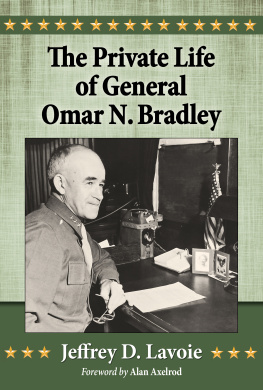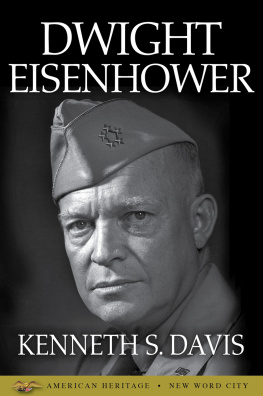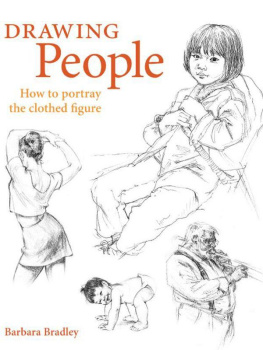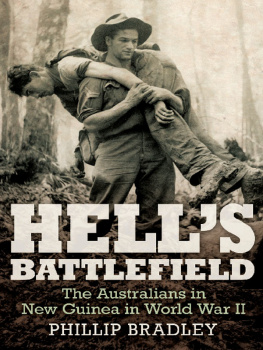
The Private Life of General Omar N. Bradley
Jeffrey D. Lavoie
Foreword by Alan Axelrod

McFarland & Company, Inc., Publishers
Jefferson, North Carolina
LIBRARY OF CONGRESS CATALOGUING DATA ARE AVAILABLE
e-ISBN: 978-1-4766-2015-2
BRITISH LIBRARY CATALOGUING DATA ARE AVAILABLE
2015 Jeffrey D. Lavoie. All rights reserved
No part of this book may be reproduced or transmitted in any form or by any means, electronic or mechanical, including photocopying or recording, or by any information storage and retrieval system, without permission in writing from the publisher.
Cover image: Gen. Bradley at his desk with portraits of his daughter and wife close at hand (Joseph Fansler Petit Collection, West Point Academy)
McFarland & Company, Inc., Publishers
Box 611, Jefferson, North Carolina 28640
www.mcfarlandpub.com
To Laurie, Emma, and Wesley Lavoie.
May Omar Bradleys life story remind you that you can
accomplish anything you set your mind to do!
Foreword
by Alan Axelrod
In 1970, 20th CenturyFox released one of the most compelling war movies ever made, which was also among the greatest of filmed biographies. Directed by Franklin J. Schaffner, Patton starred George C. Scott in the performance of a lifetime. He created a bigger-than-life screen presence for a commander who was famouslyor infamouslybigger than life. In the key supporting role of Omar Bradley was Karl Malden, who also delivered a brilliant performancebrilliant precisely because it was not bigger than life, but rather of dimensions that fit a military leader who perfectly fit the needs and the values of an American army.
Patton is a great film because it presents the commander of the Third U.S. Army in all his disturbing ambiguity. Germanys Field Marshal Gerd von Rundstedt, whom Patton defeated at the Battle of the Bulge, pronounced him Americas best general, whereas the late Andy Rooney, of 60 Minutes television fame but a young war correspondent in World War II, detested Patton and declared that it was because we had so few soldiers like him that we won the war. Oddly enough, it may have been Hollywood gossip columnist Liz Smith who put it best when she described Scotts Patton for her Cosmopolitan magazine readers as a hero-villain in all his glorious and vainglorious humanity.
Detested, hero-villain, glorious, vainglorious. None of these words was ever or would ever be applied to Omar Nelson Bradley. It was not that he was a perfect general. Far from it. It was that he was so thoroughly suited to be an American general.
AmericansPattons troops, his superiors, his colleagues, political leaders, and, most of all, the American publicnever quite knew what to think and feel about Patton: a warrior as capable of slapping his own ailing and battle-weary soldiers as he was of killing the enemy.
But they always knew what to think and feel about Bradley. Why? Because they knew and felt him to be one of them.
Among the charges the Declaration of Independence lodged against King George III was his forcing a large standing army upon the colonists. Americans have never fully trusted the military establishment and have never supported the creation of an autocratic military class. They certainly admire warriors like Patton, but ultimately they cannot tolerate themnot in a nation founded on democratic principles. In Bradley, Americans believed they had found the all-but-impossible ideal: a democratic warrior, a GI general, a commander of the people, by the people, and for the people.
Just as there is a generous ration of popular mythology behind the historical image of Patton, so myth and media portrayal (beginning with the evocative sketches provided by World War II correspondent Ernie Pyle) have shaped the Bradley image. Jeffrey D. Lavoies biography makes a fresh, insightful, and authoritative effort to separate image from reality. The reality, he reveals, is both more complex and more intriguing than the image. Yet his study also finds much truth in that image. Whereas the Patton faadehe faithfully practiced what he called his war face in front of a mirrorhid as much as it revealed, in Omar Bradley what you saw was, to a remarkable degree, what you got.
And this presents any Bradley biographer with a critical problem. Hidden motives, inner conflicts, men who wear a war face and who qualify as hero-villains are naturally dramatic. The virtues of quiet courage, rational humanity, common sense, and essential competence are far more difficult to portray compellingly. No wonder the fiery Scott played Patton and the blue-collar Malden, Bradley. Yet it is also no wonder that Francis Ford Coppola and Edmund H. North, who together wrote the Patton script, drew heavily on Bradleys own memoir, A Soldiers Story, and that the studio hired Bradley himself as a screen-credited Senior Military Advisor. Not only was Bradley present as the Patton story unfolded, he was the kind of Everyman leader, the normative insider, the trusted interpreter who could help his fellow Americans make sense of that often alien-seeming warrior.
The greatest irony in a film that subordinates the character of Bradley to that of Patton is that, in reality, Bradley rapidly eclipsed Patton, quickly rising to the top Allied field command in Europe, presiding over the Normandy D-Day landings as well as what Eisenhower so aptly called the Crusade in Europe that followed them. Patton was an unparalleled tactical commander, but it was to Bradley that George C. Marshall and Dwight D. Eisenhower entrusted the topmost strategic field command. They knew it was the kind of command that Patton neither wanted nor could have handled successfully. Although Bradley made his share of errors, he proved himself in this strategic role to be what James T. Flexner memorably called George Washington: the indispensable man.
In this biography, Jeffrey D. Lavoie focuses not on military historyBradleys part in such history has been explored and debated in many previous booksbut on the private life lived by this indispensable man. The portrait that emerges is the uniquely American story of a hard-working and intensely decent individual who combined the qualities of leader and mentor on his journey toward mastery of the military art.
There are surprises along the way, as in Lavoies exploration of Bradleys longtime affair with the journalist, screenwriter, and (unpublished) Bradley biographer Kitty Buhler, thirty years his junior. In this, some readers may detect a foreshadowing of General David Petraeus, who resigned as CIA director after the revelation of his affair with his biographer, Paula Broadwell. Bradley, however, was far more discreet, his wife, Mary Bradley, far more tolerant, and the outcome far happier. After Marys death, Kitty became Bradleys second wife.
Indeed, Lavoie takes us where previous biographers have tread but lightlyinto Omar Bradleys life and career after World War II, not only as a civilian (with an appetite for celebrity social life many readers will find entirely unexpected) but, first, as the postwar head of the Veterans Administration. If Bradleys relationship with Kitty Buhler invites comparison with the Petraeus affair, his brilliant leadership of the VAincluding his reform of veterans health care from a passive policy of warehousing the disabled wounded to the active practice of rehabilitating them and his vigorous promotion of the educational benefits under the GI Bill of Rightsmakes a stark contrast with todays climate of disgraceful mismanagement, corruption, and scandal in veterans affairs.
Next page











